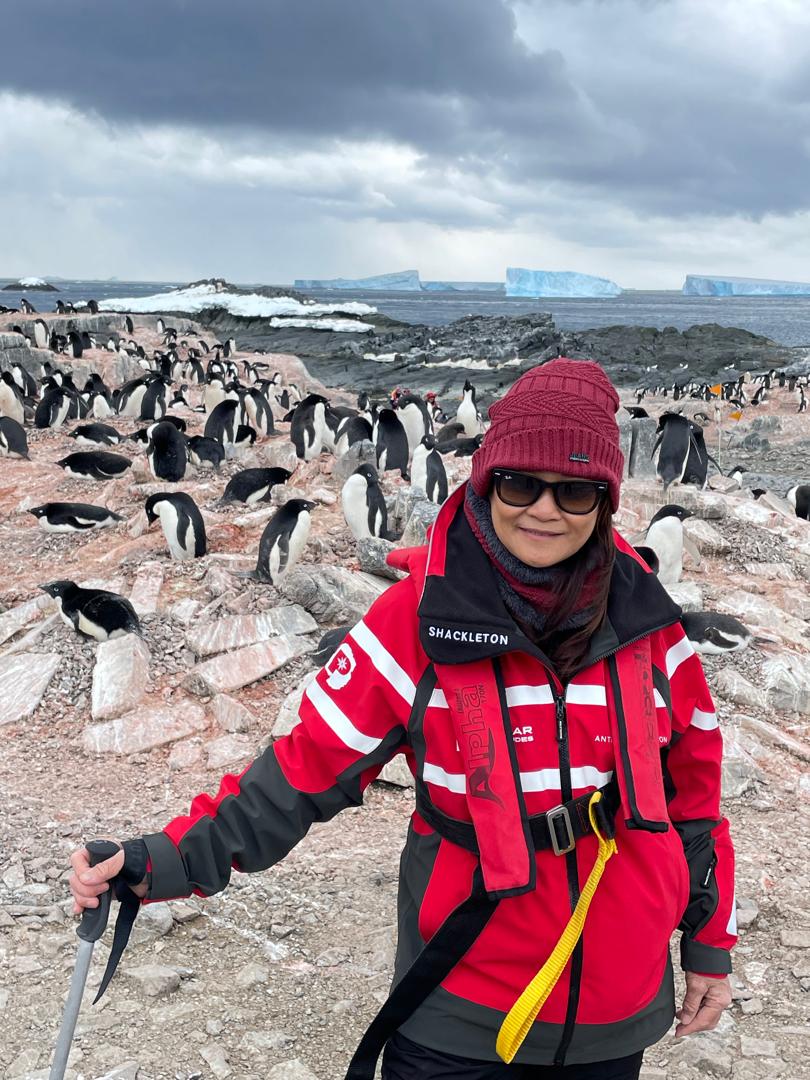Datin Seri Florence Teh is a seasoned traveler, having visited destinations across the globe—from Medina in Saudi Arabia to Iceland, Finland, Tibet, Morocco, Tanzania, and Alaska in the United States. Yet, none of these trips compared to the ethereal blue-and-white landscape of her most recent journey to the seventh continent—Antarctica.
Antarctica is nearly twice the size of Australia, with the majority of it covered by a thick sheet of ice. With no mobile phone service, no restaurants, and no cottages, it is one of the most remote places on Earth. For many travelers, it is the trip of a lifetime.
“It was an unforgettable journey! The snow and icy landscape were incredible, and there were so many penguins!” said the 60-year-old.
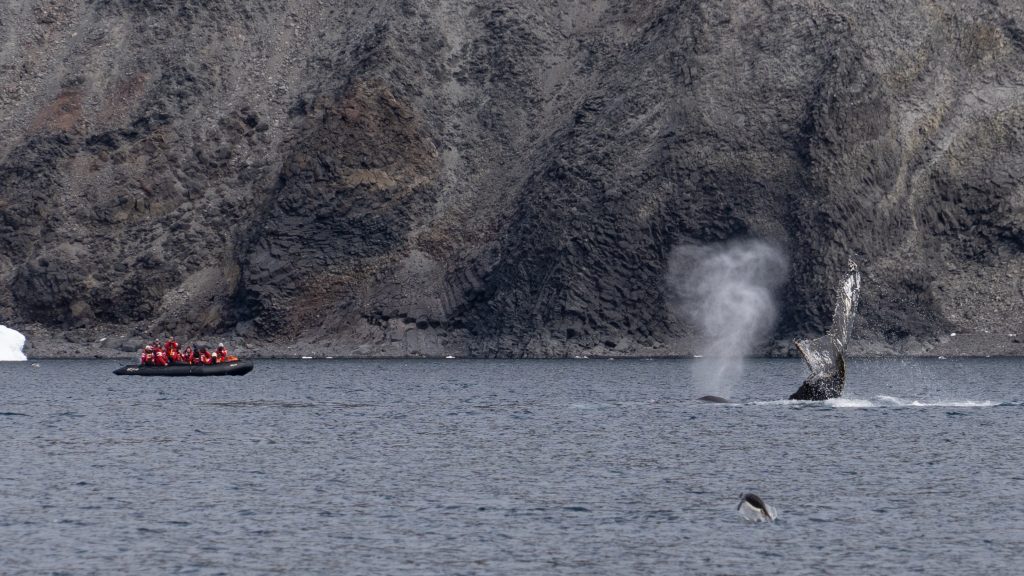
Despite traveling on a ship with about a hundred people, Florence was awed by the enormous scale of the ice and the extreme isolation of the place. Yet, even in such remoteness, the effects of climate change and the risk of viruses are evident.
In January this year, it was reported that the highly contagious H5N1 virus had spread among the king penguin population on South Georgia Island and the Falkland Islands in the sub-Antarctic region. King penguins, the world’s second-largest penguin species at about three feet tall, were severely affected.
According to Florence’s account, the fatal bird flu seemed to have devastated the penguin colony. “We saw so many dead penguins. We were told they died of bird flu, but we learned that it could also be due to climate change and overfishing,” said Florence.
International reports indicate that the outbreak also led to the deaths of other wildlife, including elephant seals, fur seals, and various bird species such as kelp gulls and brown skuas.
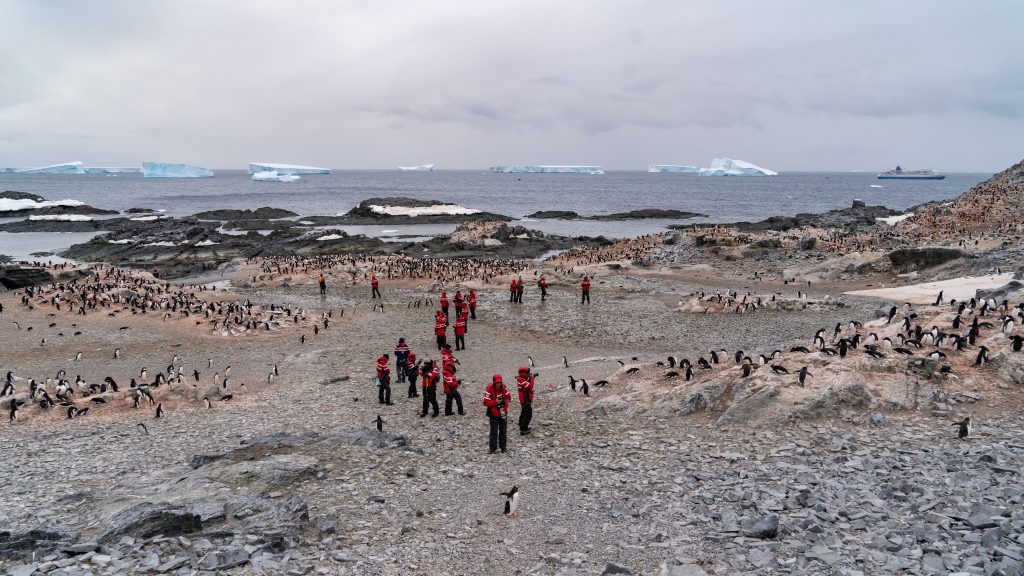
Some argue that tourism contributes to the threats facing Antarctica wildlife, but all tour operators registered with the International Association of Antarctica Tour Operators (IAATO) enforce stringent travel stipulations. The tour operators aggressively vacuum the clothing of all passengers before they go ashore and back onboard to prevent the introduction of foreign specimens in the ship and environment.
“We were provided clothing and shoes before going on shore, and every speck of dust or any material on the clothing was inspected carefully,” said Florence. “What makes Antarctica tours different from other tours are the lectures and the learning experiences the tour operators curate for guests.”
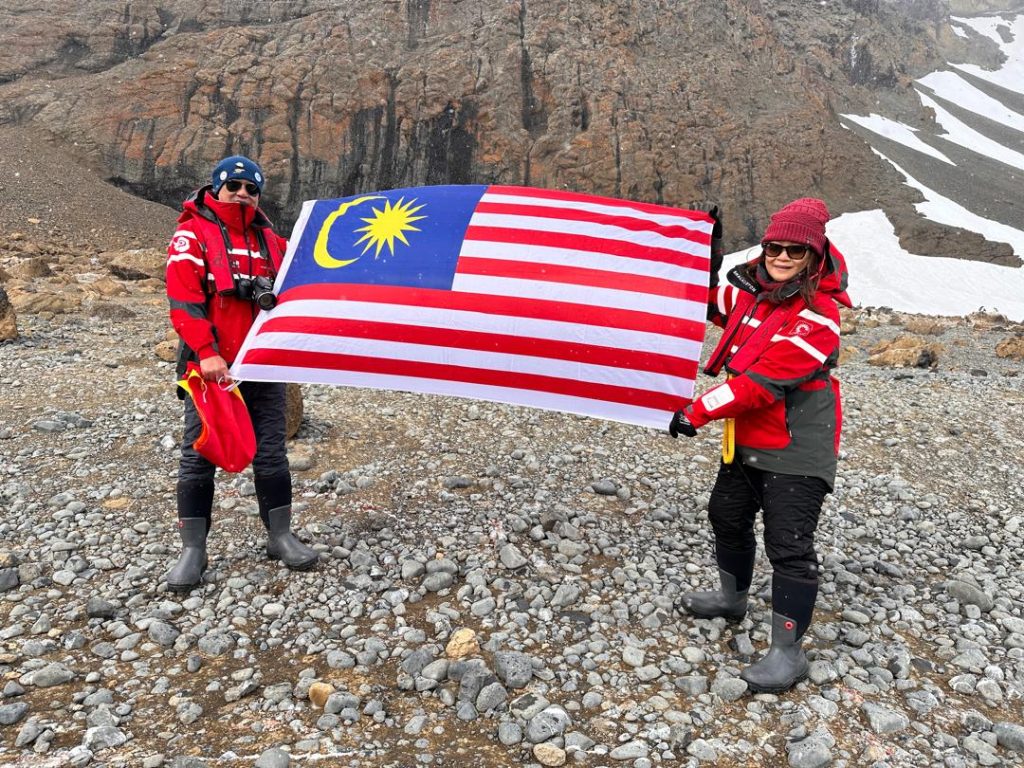
IAATO members educate and advocate for guests through daily lectures held on board the ship. In addition, the ships ferry scientific staff who are on the journey to collect water and other samples for analysis, and mingle with guests to raise awareness about the unique environment.
“I wasn’t particularly interested in the birds, geography, seals, and history, but because we had nothing to do on the journey there, we attended the lectures, and they turned out to be exciting and interesting,” said Florence, reflecting on the 19 days spent on the ship.
The tour also includes optional activities tailored to different levels of adventure. For Florence, the polar plunge—jumping off the ship into near-freezing water—was the most unforgettable experience.
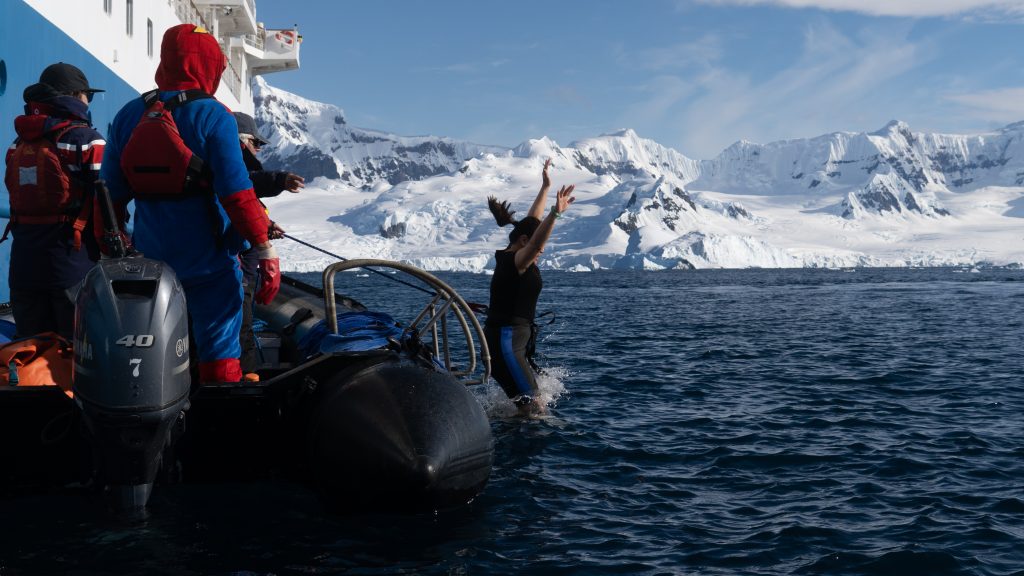
“Initially, I didn’t want to go because I have a bad knee, and my doctor advised me against it. But when the time came, my husband and friends did it, and they said to me, ‘Florence, this is a once-in-a-lifetime event, just do it!’
“So, I thought about it for a while, took my husband’s wet suit, pinched my nose, screamed, and jumped into the water,” recalled Florence, who was one of the last guests to take the polar plunge.
Post-plunge, Florence experienced a sudden and rapid increase in her heart rate, which worried her, but she calmed down after wrapping herself in warm clothing and having a hot drink. “I could hear my heart beating so fast, thinking something was going to happen. My friends and husband were totally fine, but maybe it was because they had some alcoholic drinks before they took the plunge!” she said, laughing at the experience.
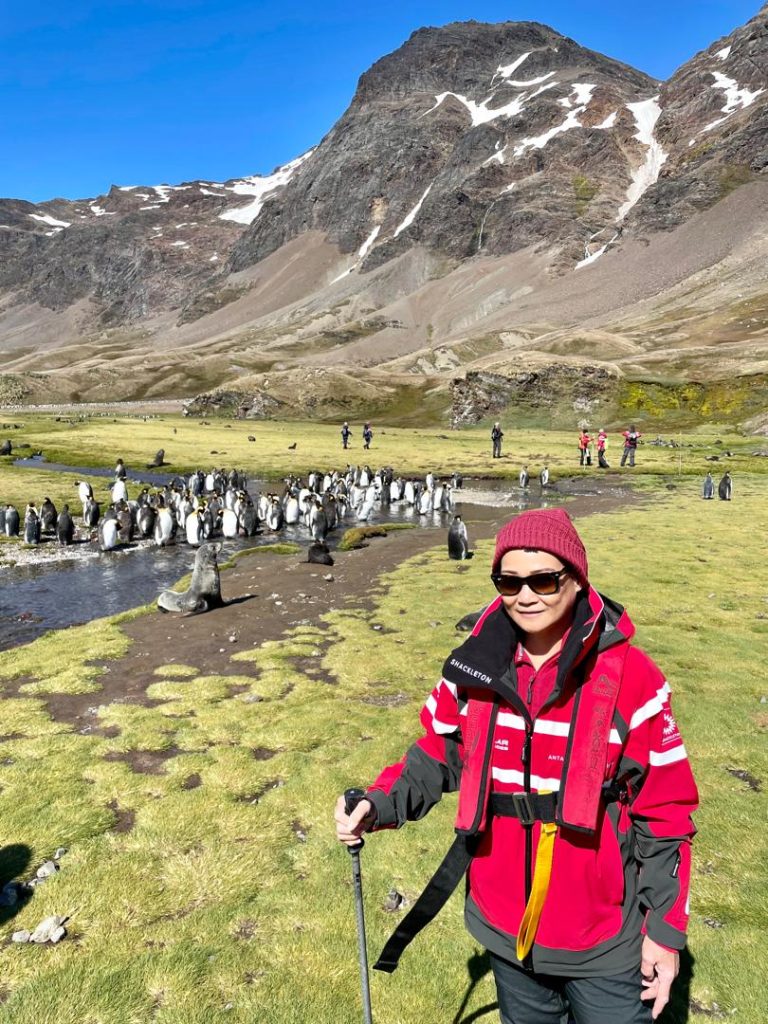
Another unique experience for any traveler to Antarctica is crossing the infamous Drake Passage. Known for its challenging conditions due to the Antarctic Circumpolar Current—the world’s strongest ocean current—the Drake Passage’s unpredictable weather and rough waves often make the journey uncomfortable for passengers.
“At first, I wanted to stay away from the seasickness medicine the ship provided, but I had to give in halfway. The currents were so strong, and the boat was swaying massively,” Florence described.
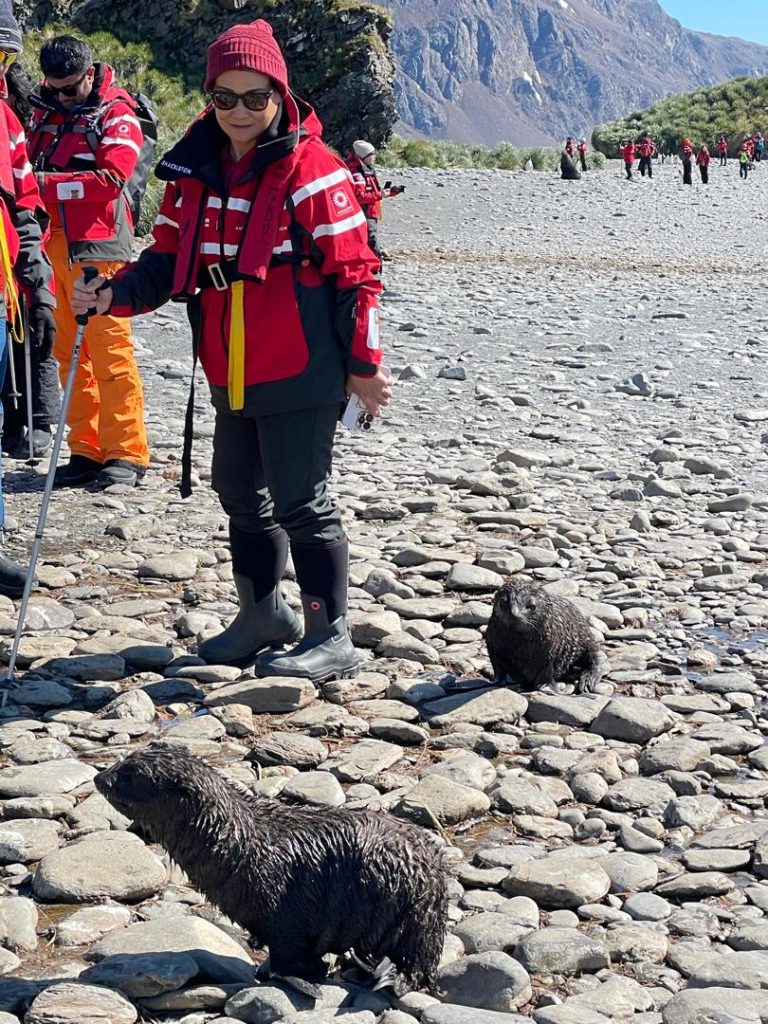
Despite the rough conditions, the ships are navigated by experienced and skilled captains, and the staff and vessels are well-equipped to handle the extreme environment.
“The captain tried to go through the Drake at night, so we could take the medicine and sleep. Throughout the ship, there were safety rails for passengers to hold on to, and the staff were experienced professionals,” said Florence.
In a nutshell, Florence’s journey to the Antarctica was not a mere travel experience but a journey of discovery, education and adventure. Her story is a reminder of the fragility of our planet and the extraordinary beauty that lies in the most remote corners. By Christine Cheah


